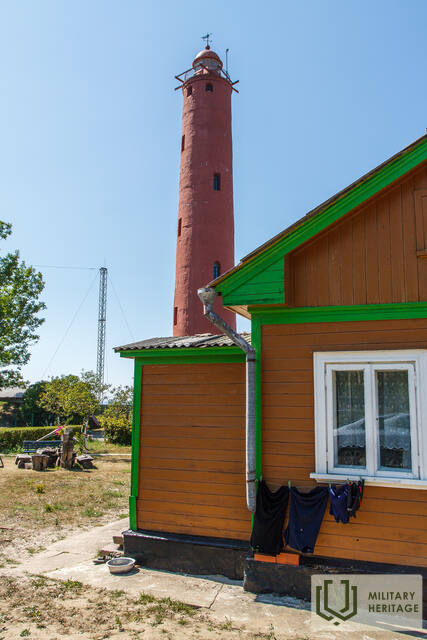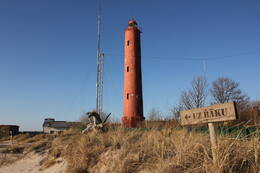"Latvijos SSR AE bus čia!"
Andrio Zaļkalno (g. 1951 m., Vērgalės kaimo Liaudies deputatų tarybos pirmininko (1982–1989 m.)) prisiminimai apie laiką, kai Akmeņrage beveik buvo statoma atominė elektrinė.
Dėl pasienio zonos ir rusų Akmesrago pusė liko beveik negyvenama, nes anksčiau tiek aplink Rudupius (Rudenieki), tiek aplink Akmensragą (Radzenieki) buvo daug namų. Žmonės šiose vietose buvo „išėsti“, tai savo laiku aprašė Tālis Vaidersas arba Tālivaldis Silsas (gimęs 1927 m. – miręs?) apsakyme „Rudenieki“. Prieš penkerius metus kartu su studentais bandėme ištirti ir išsaugoti senų gyvenamųjų namų vietas ir pavadinimus, pagaminome ir pastatėme ąžuolines lenteles su gyvenamųjų namų pavadinimais senų ūkių vietose.
Akmensrage buvo planuojama statyti atominę elektrinę (AE). Devintojo dešimtmečio pabaigoje šis klausimas pasiekė spaudą, apie jį sužinojo ir kaimų tarybos. 1989 m., kai visi Černobylio įvykiai dar buvo švieži atmintyje, visų kaimų – Sakos, Paviluostos, Medzės, Vērgalės – aktyvistai susibūrė ir protestavo. Mano iniciatyva parašėme laišką LKPCK (Latvijos komunistų partijos centrinio komiteto) laikraščiui „Cīņa“, kuriame motyvavome nestatyti AE, nes nenorime, kad pasikartotų Černobylio katastrofa, 1940-ieji su trėmimais, labai apgailėtina nuotaika. Tuo pačiu metu vienas Sakos gyventojas rinko parašus prieš AE statybą, surinko kelias dešimtis tūkstančių parašų. Kartu organizavome susitikimą su laidos „Labvakar!“ kūrybine komanda, todėl jie atvyko į Akmensrago švyturį, dalyvavo žurnalistai E. Inkēns ir O. Rubenis, operatorius. Užlipome į švyturį ir nuvykome į vietą, kur buvo planuojama statyti atominę elektrinę. Toje vietoje neva žemėje buvo įkastas ąžuolinis stulpas (jo daugiau nemačiau) su užrašu rusų ir latvių kalbomis „Čia bus Latvijos SSR atominė elektrinė!“ Vieta, maždaug 1 km nuo švyturio Paviluosto link, jūros pakrantėje. Renginys jau buvo triukšmingas, bet tikriausiai to nereikėjo, nes SSRS subyrėjo.
Susijusi laiko juosta
Susijusios temos
Susijusios vietos
Akmeņrago švyturys ir „Saratovo“ likimas
Akmeņrago švyturys yra Sakos valsčiuje, 10 kilometrų į pietvakarius nuo Paviluostos. Į švyturio viršūnę galima patekti spiraliniais laiptais, iš jos atsiveria vaizdas į jūrą ir aplinkinius miškus. Dabartinis 37 metrų aukščio švyturio bokštas buvo pastatytas 1921 m., o ankstesnis švyturys buvo sunaikintas per Pirmąjį pasaulinį karą.
Akmeņrago švyturys išsiskiria iš kitų Latvijos švyturių, nes yra vienoje pavojingiausių laivybai vietų visoje Baltijos jūros pakrantėje. Švyturio signalinis spindulys žymi uolėtą krantą, kuris šiaurės vakarų kryptimi tęsiasi maždaug dvi jūrmyles arba 3,7 kilometro į jūrą. Kranto gylis yra kiek daugiau nei du metrai. Švyturio vieta nepakito, tačiau pakrantė bėgant metams tolsta. Nors navigacijos šviesa čia yra nuo 1879 m., Akmeņrage įvyko keletas laivų avarijų. Žymiausia įvyko 1923 m. rugsėjį, kai į seklumą atsitrenkė Latvijos garlaivis „Saratow“. 1919 m. Saratovas trumpai buvo Latvijos laikinosios vyriausybės būstinė. Akmeņrage anksčiau buvo pasienio apsaugos postas, čia galima apžiūrėti sovietų armijos pastatus.







